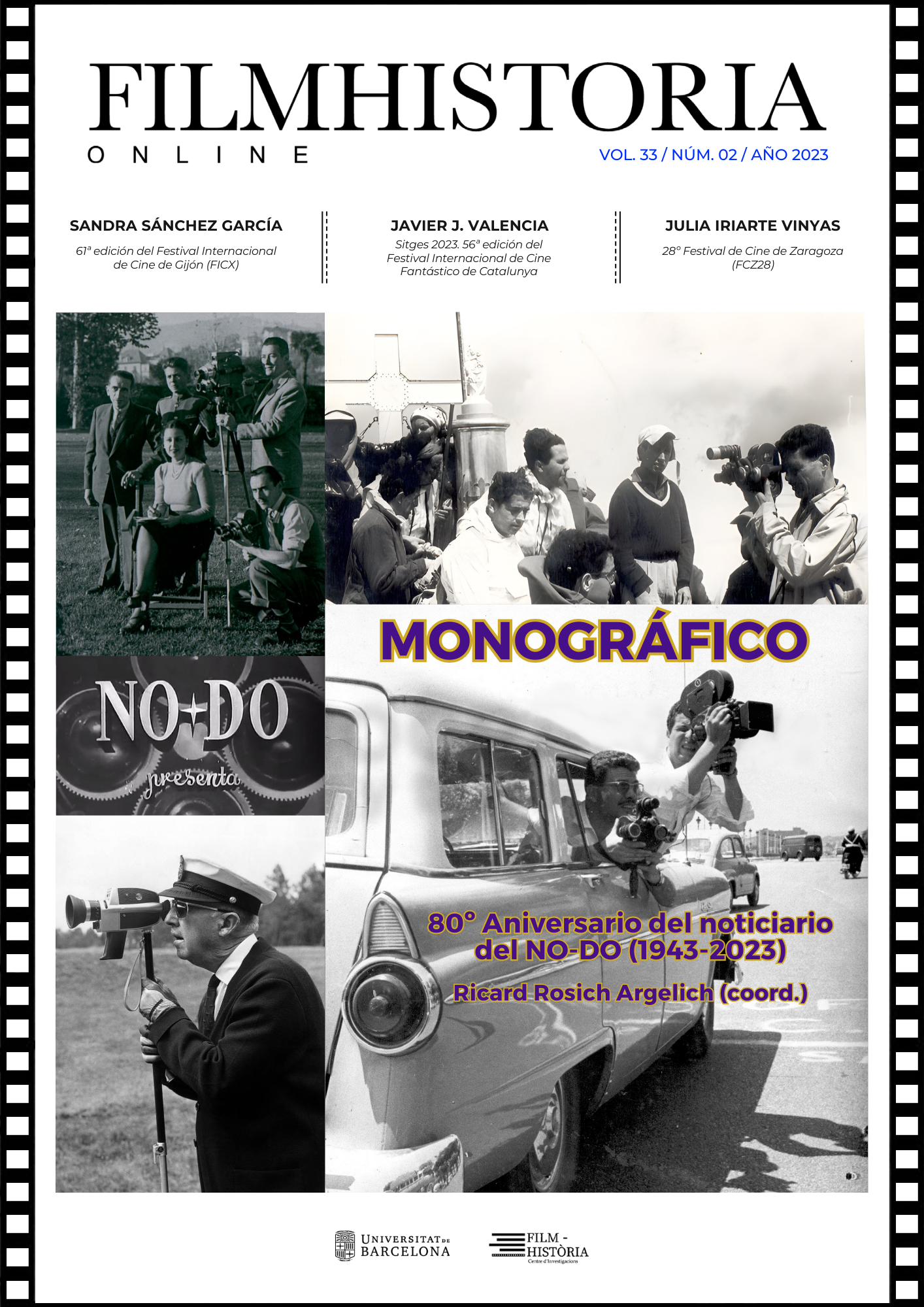WOMEN ARTISTS IN THE POST-FRANCOIST NO-DO (1975-1981). A TRANSVERSAL GENDER APPROACH ON THE VIEWER’S SIGHT AND THE EXTRADIEGETICAL NARRATOR
DOI:
https://doi.org/10.1344/fh.2023.33.2.399-416Keywords:
NO-DO, gender perspective, women artists, post-francoism, Spain.Abstract
The NO-DO (Noticiarios y Documentales) was one of the tools of control used by the Franco’s regime for the dissemination of content, news and reports related to its doctrine. Women developed an important role in terms of its dissemination, since they were the majority audience that viewed this type of content. Therefore, the NO-DO approach was intended to offer a submissive image relegated to the sphere of the home, with a doctrinal purpose protected by the Franco’s regime. So much so that, during the years that this news program was in the air, between the end of 1942 and mid-1981, several reports were broadcast about Women’s Section of Falange and about women and their jobs. Regarding art and its functions, as well as big names in the artistic and plastic scene, they were disclosed over the years with a certain assiduity and recurrence in the NO-DO. However, these reports, for the most part, contain only male names. There is a small portion of female artists who have been the subject of interviews in NO-DO. From a gender perspective and analyzing the gaze of the viewer and the extradiegetic narrator -through an artistic-historical methodology-, we will analyze the female artists who have been included in the NO-DO in the post-Franco era, as well as the connotations and how they are represented in these sections of the NO-DO.







